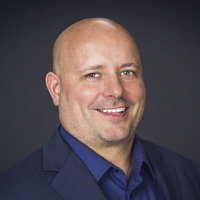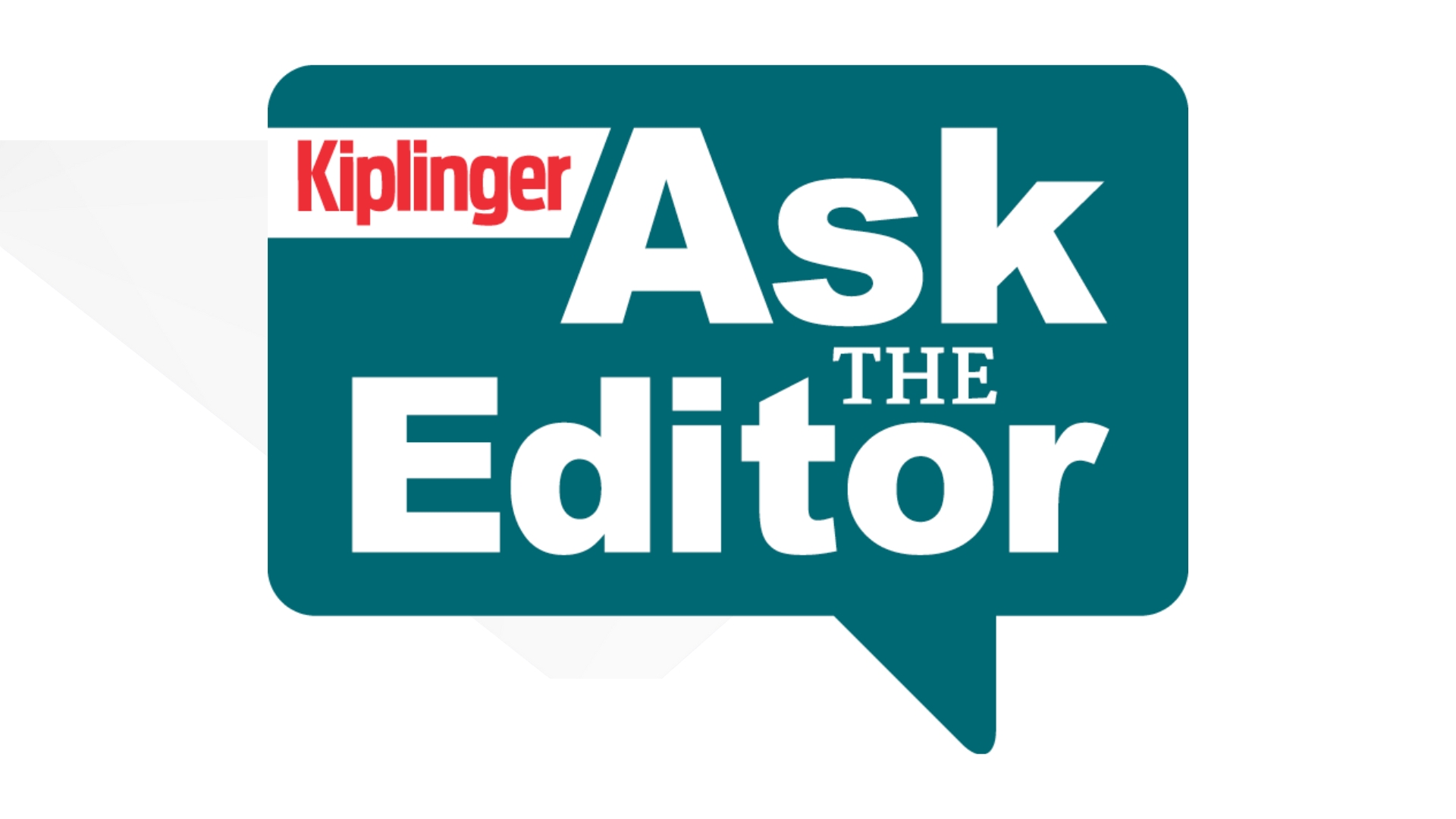When RMDs Loom Large, QCDs Offer a Gratifying Tax Break
Send money directly to charity from your traditional IRA, and you won’t owe taxes on the amount you donate. It’s a win-win!


When you were younger and busy building your nest egg, it’s likely you didn’t give much thought to the impact required minimum distributions (RMDs) could have on your retirement someday.
The plan back then, when you chose to contribute your savings to a traditional IRA, was probably straightforward: to enjoy the account’s tax advantages each year for many years while accumulating as much money as possible.
Somebody might have mentioned something about the IRS eventually getting a share of that money when you reached your early 70s, but that problem seemed a long way off. Now, here you are, and those RMDs are looming. And because of your diligent saving and smart investing, the tax bite — starting at age 72 and continuing every year after that — could be staggering.

Sign up for Kiplinger’s Free E-Newsletters
Profit and prosper with the best of expert advice on investing, taxes, retirement, personal finance and more - straight to your e-mail.
Profit and prosper with the best of expert advice - straight to your e-mail.
Fortunately, if charitable giving is one of your retirement objectives, there’s a tax-relief strategy that can be a win-win for you and your favorite organizations. It’s called a qualified charitable distribution, or QCD.
Once you turn 70½, the QCD rule allows you to instruct your IRA administrator to direct transfer up to $100,000 annually to one or more eligible 501(c)(3) charities. And because that money is going directly to charity, it isn’t considered taxable income, and you won’t pay taxes on the amount you donate.
A Charitable Tax Deduction Without Itemizing
The ability to make this charitable tax deduction without itemizing can be a significant benefit on its own. If the higher standard deduction that was put in place in 2018 turned itemizing into a no-go for you, you can use a QCD at 70½ to keep up your charitable giving and still receive a tax break.
But if you’re 72 or older and must take RMDs, the benefits get even better. The QCD amount can then be counted toward your RMD for the year. Instead of paying taxes on the mandated withdrawal as ordinary income — the way an RMD normally works — you wouldn’t owe any taxes on the portion of your RMD that you gave to charity.
Using your RMD as a charitable contribution excludes that amount from your adjusted-gross income (AGI). This means that along with reducing your income taxes, it also could lower the amount of your Social Security benefit subject to federal income taxes and help you avoid or reduce income-related Medicare surcharges.
We’re talking about an opportunity for tax savings here, so of course there are rules and limitations. Here are some things to consider:
You can’t make a QCD from an employer-sponsored plan. If you have savings in a 401(k), 403(b), deferred compensation or Thrift Savings Plan (TSP), you can’t make a QCD directly to a charity. However, you could directly transfer money from this type of plan to a traditional IRA, then make the QCD from the IRA.
You can’t receive any benefit for making a QCD to a charity. So, for example, you couldn’t pay the entry fee for a charity tennis tournament with the QCD gift or buy something at a charity auction. (If you have questions about what is and isn’t OK, it’s a good idea to consult with your financial or tax adviser.)
You can spread out the QCD among multiple charities or give to just one. But the money must go only to eligible charities. (The IRS offers a tax-exempt organization search tool on its website.)
You and your spouse both can use a QCD. If you and your spouse are 70½ or older, and you each have your own IRA, you can both take advantage of a QCD and donate up to $100,000 each.
Your QCD amount can be more than your RMD. If you give more, though, you can’t carry forward the excess to future tax years. (You also can donate less than your full RMD, but if you do, you still will need to withdraw the remaining RMD amount and pay ordinary federal income taxes on it.)
Last but not least (and these two are biggies):
You can’t transfer the funds from your IRA to your personal account, then write a check from your account to your charity. The money must be made payable directly from the IRA to an IRS-approved charity.
If you work with a tax preparer or tax accountant, be sure you let that person know you did a QCD. You should receive a 1099 showing the distribution took place, but the form may not clearly designate the distribution as a QCD. If the distribution isn’t properly recorded on your tax return, you could lose your tax break.
The rules (and potential for getting something wrong) may make using QCDs seem off-putting at first. And it may not be a DIY move — at least not the first time you do it. But the benefits for you and your favorite charities make it worth checking out what this strategy has to offer. Your financial adviser or tax adviser can walk you through the pros and cons and how they might apply to your specific circumstances.
Kim Franke-Folstad contributed to this article.
Appearances on Kiplinger.com were obtained through a paid PR program. The columnist received assistance from a public relations firm in preparing this piece for submission to Kiplinger.com. Kiplinger was not compensated in any way.
Investment advisory services made available through AE Wealth Management, LLC (AEWM). AEWM and Scott Tucker Solutions, Inc. are not affiliated companies.
Insurance products are offered through the insurance business Scott Tucker Solutions, Inc. (STS). STS is also an Investment Advisory practice that offers products and services through AE Wealth Management, LLC (AEWM), a Registered Investment Adviser. AEWM does not offer insurance products. The insurance products offered by STS are not subject to Investment Advisor requirements. AEWM and STS are not affiliated companies.
Please remember that converting an employer plan account to a Roth IRA is a taxable event. Increased taxable income from the Roth IRA conversion may have several consequences including (but not limited to) a need for additional tax withholding or estimated tax payments, the loss of certain tax deductions and credits, and higher taxes on Social Security benefits and higher Medicare premiums. Be sure to consult with a qualified tax advisor before making any decisions regarding your IRA. Neither the firm nor its agents or representatives may give tax or legal advice. Individuals should consult with a qualified professional for guidance before making any purchasing decisions. Our firm is not affiliated with or endorsed by the U.S. Government or any governmental agency. Any media logos and/or trademarks contained herein are the property of their respective owners and no endorsement by those owners of Scott Tucker Solutions, Inc. is stated or implied. 148287 - 10/22
Related Content
- Calculate Your Required Minimum Distribution From IRAs
- Considering Donating to Charity? Here’s a Road Map to Steer Your Choices
- When Is Your First RMD Due?
Get Kiplinger Today newsletter — free
Profit and prosper with the best of Kiplinger's advice on investing, taxes, retirement, personal finance and much more. Delivered daily. Enter your email in the box and click Sign Me Up.

Scott Tucker is president and founder of Scott Tucker Solutions, Inc. He has been helping Chicago-area families with their finances since 2010. A U.S. Navy veteran, Scott served five years on active duty as a cryptologist and was selected for duty at the White House based on his service record. He holds life, health, property and casualty insurance licenses in Illinois, has passed the Series 65 securities exam in 2015 and is an Investment Adviser Representative.
-
 The AI Doctor Coming to Read Your Test Results
The AI Doctor Coming to Read Your Test ResultsThe Kiplinger Letter There’s big opportunity for AI tools that analyze CAT scans, MRIs and other medical images. But there are also big challenges that human clinicians and tech companies will have to overcome.
By John Miley Published
-
 The Best Places for LGBTQ People to Retire Abroad
The Best Places for LGBTQ People to Retire AbroadLGBTQ people can safely retire abroad, but they must know a country’s laws and level of support — going beyond the usual retirement considerations.
By Drew Limsky Published
-
 Financial Planning's Paradox: Balancing Riches and True Wealth
Financial Planning's Paradox: Balancing Riches and True WealthWhile enough money is important for financial security, it does not guarantee fulfillment. How can retirees and financial advisers keep their eye on the ball?
By Richard P. Himmer, PhD Published
-
 A Confident Retirement Starts With These Four Strategies
A Confident Retirement Starts With These Four StrategiesWork your way around income gaps, tax gaffes and Social Security insecurity with some thoughtful planning and analysis.
By Nick Bare, CFP® Published
-
 Should You Still Wait Until 70 to Claim Social Security?
Should You Still Wait Until 70 to Claim Social Security?Delaying Social Security until age 70 will increase your benefits. But with shortages ahead, and talk of cuts, is there a case for claiming sooner?
By Evan T. Beach, CFP®, AWMA® Published
-
 Retirement Planning for Couples: How to Plan to Be So Happy Together
Retirement Planning for Couples: How to Plan to Be So Happy TogetherPlanning for retirement as a couple is a team sport that takes open communication, thoughtful planning and a solid financial strategy.
By Andrew Rosen, CFP®, CEP Published
-
 Market Turmoil: What History Tells Us About Current Volatility
Market Turmoil: What History Tells Us About Current VolatilityThis up-and-down uncertainty is nerve-racking, but a look back at previous downturns shows that the markets are resilient. Here's how to ride out the turmoil.
By Michael Aloi, CFP® Published
-
 Ask the Editor: Taxes, April 11, 2025
Ask the Editor: Taxes, April 11, 2025Ask the Editor In our Ask the Editor series, Joy Taylor, The Kiplinger Tax Letter Editor, answers questions related to IRAs and other retirement accounts.
By Joy Taylor Published
-
 Could You Retire at 59½? Five Considerations
Could You Retire at 59½? Five ConsiderationsWhile some people think they should wait until they're 65 or older to retire, retiring at 59½ could be one of the best decisions for your quality of life.
By Joe F. Schmitz Jr., CFP®, ChFC® Published
-
 Home Insurance: How to Cut Costs Without Losing Coverage
Home Insurance: How to Cut Costs Without Losing CoverageNatural disasters are causing home insurance premiums to soar, but don't risk dropping your coverage completely when there are ways to keep costs down.
By Jared Elson, Investment Adviser Published